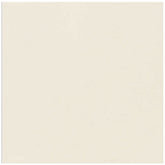The Ultimate Guide to Tile Flooring: Exploring Styles, Benefits, and Applications
Tile flooring has long been celebrated for its durability, versatility, and aesthetic appeal. Whether you’re renovating a home, designing a new commercial space, or simply upgrading a single room, tile flooring offers a range of options to suit various styles and functional requirements. This comprehensive guide will explore the different types of tile flooring, their benefits, applications, and some installation and maintenance tips to help you make informed decisions for your next project.
Types of Tile Flooring
-
Ceramic Tiles
Characteristics: Ceramic tiles are made from a mixture of clay and other natural materials, fired at high temperatures to create a hard and durable surface. They are typically coated with a protective glaze that makes them water-resistant and easy to clean.
Applications: Ceramic tiles are ideal for kitchens, bathrooms, and entryways due to their moisture resistance. They come in a wide variety of colors, patterns, and finishes, making them suitable for both functional and decorative applications.
-
Porcelain Tiles
Characteristics: Porcelain tiles are a subtype of ceramic tiles, but they are denser, less porous, and fired at higher temperatures. This makes them more durable and resistant to stains and moisture.
Applications: Suitable for both indoor and outdoor use, porcelain tiles are perfect for high-traffic areas such as living rooms, hallways, and patios. Their robustness makes them a great choice for areas exposed to heavy foot traffic and potential spills.
-
Natural Stone Tiles
Characteristics: Natural stone tiles include options such as marble, granite, slate, and limestone. Each type of stone offers unique properties and aesthetic appeal, providing a luxurious and timeless look.
Applications: Often used in high-end residential and commercial projects, natural stone tiles are ideal for kitchens, bathrooms, and living areas. They require sealing to prevent staining and maintain their appearance over time.
-
Glass Tiles
Characteristics: Made from thin pieces of glass, these tiles are highly reflective and can add brightness to any space. They are available in various colors and can be used to create intricate mosaic patterns.
Applications: Commonly used as backsplashes in kitchens and bathrooms, glass tiles can also serve as decorative accents in showers, around fireplaces, or in other feature areas.
-
Vinyl Tiles
Characteristics: Vinyl tiles are made from synthetic materials and designed to mimic the look of natural stone or wood. They are durable, water-resistant, and often come with a cushioned backing for added comfort underfoot.
Applications: Perfect for basements, bathrooms, kitchens, and other moisture-prone areas. Vinyl tiles are also a cost-effective alternative for those looking to achieve a high-end look without the high-end price tag.
-
Mosaic Tiles
Characteristics: These small tiles, often made of ceramic, porcelain, glass, or stone, are arranged to create intricate patterns or images. They are typically mounted on mesh sheets for easier installation.
Applications: Used primarily for decorative purposes, mosaic tiles can enhance backsplashes, showers, and feature walls, adding a touch of artistry to any space.
Benefits of Tile Flooring
-
Durability
Tiles are known for their longevity and resistance to wear and tear, making them an excellent investment for both residential and commercial properties. Porcelain and natural stone tiles, in particular, can withstand heavy foot traffic and maintain their appearance for decades.
-
Easy Maintenance
Most tiles, especially glazed ceramic and porcelain, are easy to clean and require minimal maintenance. Regular sweeping and occasional mopping are usually sufficient to keep them looking pristine.
-
Water Resistance
Ceramic, porcelain, and vinyl tiles are highly resistant to moisture, making them ideal for kitchens, bathrooms, and other wet areas. Proper sealing can also enhance the water resistance of natural stone tiles.
-
Versatility
Tiles come in an extensive range of colors, patterns, sizes, and textures, offering endless design possibilities. Whether you prefer a sleek modern look or a rustic, traditional style, there is a tile to suit every aesthetic.
-
Hypoallergenic
Tiles do not harbor allergens such as dust mites, pet dander, or pollen, making them an excellent choice for households with allergy sufferers. They also do not absorb odors, which is beneficial for maintaining a fresh indoor environment.
Choosing the Right Tile for Different Spaces
- Kitchens
Recommended Tiles: Ceramic, porcelain, and vinyl tiles are excellent choices for kitchens due to their durability and water resistance. Porcelain tiles, in particular, are favored for their ability to withstand heavy use and potential spills.
Design Tips: Consider using larger tiles for a seamless look and fewer grout lines, which can make cleaning easier. For added visual interest, incorporate a mosaic tile backsplash.
- Bathrooms
Recommended Tiles: Ceramic, porcelain, glass, and natural stone tiles are suitable for bathrooms. Porcelain and glass tiles are especially recommended for their non-porous nature and resistance to mold and mildew.
Design Tips: Use slip-resistant tiles for flooring to enhance safety. Glass tiles can add a luxurious touch to shower walls and backsplashes. For a spa-like feel, consider using natural stone tiles.
- Living Areas
Recommended Tiles: Porcelain, ceramic, and natural stone tiles are ideal for living rooms and other high-traffic areas. Natural stone tiles can add elegance and a timeless appeal to these spaces.
Design Tips: Opt for tiles with a matte finish to reduce glare and create a warm, inviting atmosphere. Large-format tiles can make a space feel more expansive.
- Outdoor Spaces
Recommended Tiles: Porcelain and natural stone tiles are the best options for outdoor areas like patios, walkways, and pool surrounds due to their durability and resistance to weather elements.
Design Tips: Ensure the tiles are rated for outdoor use and have a slip-resistant surface. Neutral or earthy tones can complement the natural surroundings and create a cohesive outdoor design.
Installation and Maintenance Tips
Installation
- Preparation: Ensure the subfloor is clean, dry, and level before starting the installation. This is crucial for achieving a smooth, long-lasting finish.
- Layout: Plan the tile layout before applying adhesive to avoid awkward cuts and ensure a balanced look. Use spacers to maintain consistent grout lines.
- Adhesive and Grout: Choose the appropriate adhesive and grout for the type of tile and application area. Follow the manufacturer's instructions for mixing and application.
Maintenance
- Cleaning: Regularly sweep or vacuum the tiles to remove dirt and debris. Use a damp mop with a mild detergent for deeper cleaning. Avoid harsh chemicals that can damage the tile or grout.
- Sealing: Natural stone tiles and some grout types require sealing to protect against stains and moisture. Follow the manufacturer's recommendations for sealing frequency.
- Repairs: Promptly address any chips or cracks to prevent further damage. Replace damaged tiles as needed to maintain the integrity and appearance of the flooring.
Conclusion
Tile flooring is a versatile and durable option that can enhance the beauty and functionality of any space. By understanding the different types of tiles, their benefits, and their suitable applications, you can make informed choices that meet your aesthetic and practical needs. Whether you’re renovating a single room or designing an entire building, tile flooring offers endless possibilities to create a stunning and long-lasting foundation for your interior design. With proper installation and maintenance, tile floors can provide years of enjoyment and add significant value to your property.




